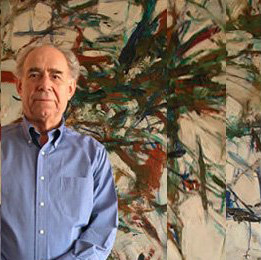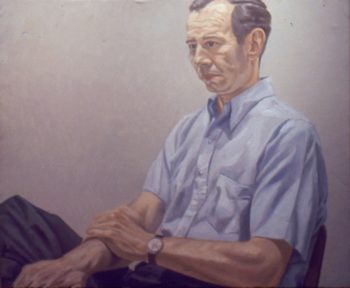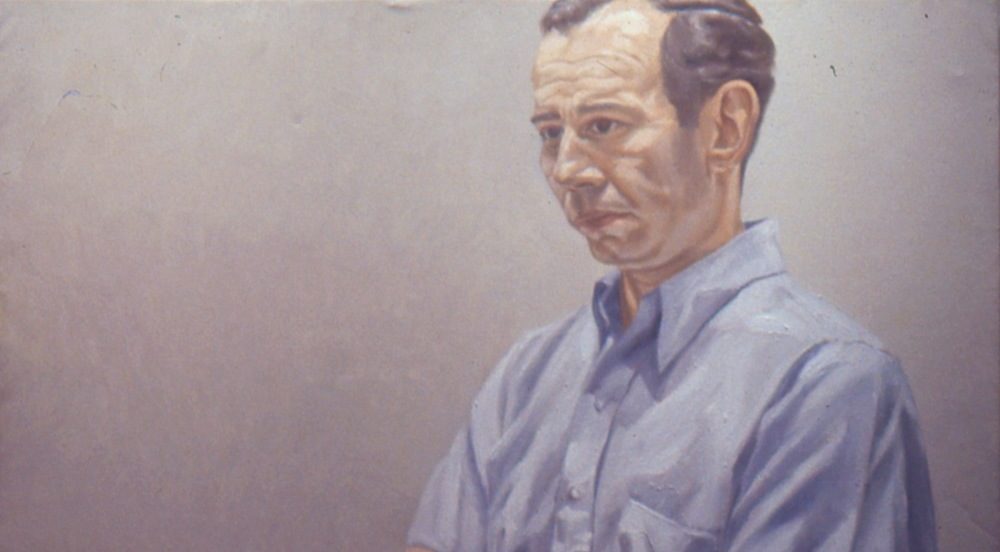[ad_1]

Irving Sandler.
SUNY PURCHASE
“The thread that runs through my writing is a concern for the intentions, visions, and experiences of artists,” the art critic and historian Irving Sandler wrote in 2006. He was looking back on a career that tracked the art of half a century, from Abstract Expressionism to the constellation of styles and approaches that constitutes the art of the early 21st century. Sandler, who passed away earlier today at age 92, never stopped looking, and thinking.
Susan Harris, co-president of the United States section of the International Association of Art Critics, sent an email to AICA members on Saturday informing them that Sandler’s wife, Lucy Sandler, had emailed her to tell her that “Irving died peacefully at home this afternoon.” Sandler had been diagnosed with lung cancer earlier in the spring.
The Philadelphia-born Sander started his career as an art critic in 1956, in the pages of ARTnews, where he became a regular reviewer. Thomas Hess was editor at the time. He went on to write reviews for the New York Post and Art in America.

Philip Pearlstein, Irving Sandler, 1967.
COURTESY THE ARTIST
In 1970, Sandler published his first book, The Triumph of American Painting: A History of Abstract Expressionism, which would be followed by The New York School: The Painters and Sculptors of the 1950s (1978), American Art of the 1960s (1988), Art of the Postmodern Era: From the Late 1960s to the Early 1990s (1997), A Sweeper-Up After Artists: A Memoir by Irving Sandler (2004), and From Avant-Garde to Pluralism: An On-the-Spot History (2006).
Throughout his career, Sandler’s approach as an art critic and historian was characterized by his close relationships with artists and his efforts to understand the way they worked and their intentions. A 2014 article on the website Artspace describes some of the artists in his milieu:
Mark Rothko, Philip Guston (“Philip would say again and again—as if he had never said it before—that everything in a work of his had to be ‘felt’”), Franz Kline (he “held court at the Cedar Street Tavern almost every night after ten”), David Smith, Tony Smith, Robert Motherwell, Ad Reinhardt, Jackson Pollock, Barnett Newman, Hans Hofmann (“I always admired Hans’ painting and believe that certain of his pictures—Lava and Agrigento come to mind—must be numbered among the greatest abstract expressionist canvases”), Willem de Kooning, and Clyfford Still (“as a de Kooning man, it took me time to appreciate Still’s innovation”). Sandler’s “pals” included: Alex Katz (they’re still friends today), Philip Pearlstein, Al Held, Mark di Suvero.
Far from confining himself to writing, Sandler at various points took on almost every role the art world has to offer. He was the manager of an artists’ co-op gallery in New York (Tanager from 1956 to 1959), an educator (at the State University of New York, Purchase), a co-founder of an influential alternative space (Artists Space, with Trudie Grace in 1972), and a museum director (at the Neuberger Museum of Art at SUNY Purchase).
This post will be updated.
[ad_2]
Source link

